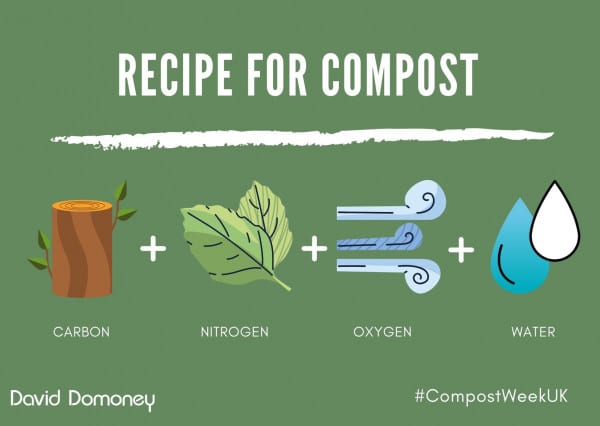You’ve started composting, but there are a few materials that you don’t know whether to throw into the compost mix. Will they complement the compost or create unpleasant smells that will attract rodents?
This blog will shed some light into some of these myths to help you on your composting journey.
Waste not, want not
Getting to know what can and cannot go in your compost bin is essential, some materials can attract pests and unwanted bacteria. And it’s not only what’s going in, but how much too. You’ll need to get to grips with the split of materials, so you have the best balance.
Just like any cooking recipe, you must have the right ingredients to get the best results. For good compost, this is what you need:

‘Green’ materials are those with high nitrogen content that are quick to rot down and add moisture to the mix. These are things like vegetable peelings, tea bags and grass cuttings.
On the other hand, ‘brown’ materials are those with high carbon content which include eggshells, cardboard and straw. Having the right balance of these is needed to maximise the quality of your compost.
The general ratio advised is three or four parts browns to one-part green, but this may need to be adjusted as some green materials are higher in nitrogen than others and some brown materials are higher in carbon than others. It doesn’t have to be exact, but having too much green material may result in a wet and smelly mixture.
You will know when your compost is ready, it’ll be a crumbly and dark material that smells earthy and fresh.
Get the balance of compost materials
Combining the proper mix of greens and browns will boost the productivity of the compost bin, if there’s an imbalance the compost pile might not heat up, may take longer to break down or produce an unpleasant odour.
If your compost is too wet there may be too many green materials in it, by adding more brown materials, you will increase the drainage, letting the compost breathe again.

For compost that is too dry, try watering the heap with rainwater, mixing the materials at the same time. Or add some fresh green materials, to give it that nitrogen boost.
Whatever materials you are adding, break or chop them down into smaller pieces to speed up the process.
What not to compost
There are certain items that you’re best to avoid putting into your compost for a variety of reasons.
Below is an image, that you can use as a reminder of what’s safe and some of the main things to avoid.

- Cat and dog droppings and litter may contain diseases or harmful organisms that will spread in your compost. Avoid composting waste from any omnivorous pet, especially if you will be using your compost around edible crops.
- Fish & bones can attract rodents that are unwanted in your compost and will lead to unpleasant smells.
- Too many veg peelings (green material) which is moist, or too many cardboard and paper (brown material), which is dry, can through your compost off kilter. Generally, stick to 1/3 green and 2/3 brown, checking to see moisture content visually to determine what to add.
- Meat, fat and oil shouldn’t be added to the mix as it will invite rodents to the area.
- Furthermore, anything that has come into contact with meat during cooking shouldn’t be composted either.
- Dairy items can attract rats and other undesirable animals, they also won’t add much bulk to the compost, so it’s not worth the risk.
- Walnut trees release a chemical called juglone, which is toxic to some vegetables and plants, such as tomatoes, so it’s best to avoid composting anything related to walnuts.
- Banana skins take a long time to decompose so you can add them but you might decide to cut them up first.
That still leaves a whole host of materials that you can dispose of in your own garden rather than sending them to landfill. Ensuring you have the right balance of suitable materials means you will be ready to produce perfectly good compost to use in your garden.

Leave A Comment